
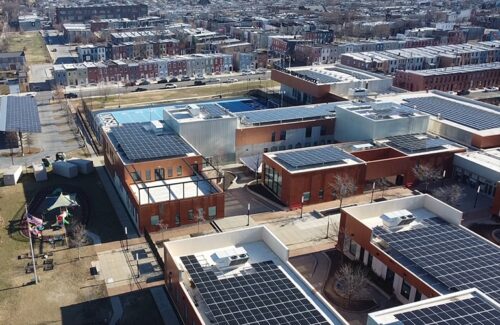
Earlier this year, the Climate Access Fund, Solar Steward, CohnReznick, and other partners launched the Solar4Us @ Henderson Hopkins project, a $3.8 million, 808 kilowatt rooftop community solar project. The project is owned and developed by the Climate Access Fund and is located at Elmer A. Henderson: Johns Hopkins University, a public K-8 school in Baltimore. The Solar4Us @ Henderson Hopkins project not only saved nearly $1 million in energy costs for approximately 150 low - and middle-income households over 35 years and provided vocational training opportunities, but also expanded practical pathways for businesses to participate in energy transition through Social Renewable Energy Certificates (Social RECs). Through the unique arrangement developed by Atlanta based social enterprise Solar Stewards, the school's vocational training and courses will be funded through the purchase of Solar4Us @ Henderson Hopkins' Renewable Energy Credit (REC) by professional service company CohnReznick, generating over $250000 in sustained income for the Solar4Us @ Henderson Hopkins project, Climate Access Fund, and the organization's future community solar goals. We recognize that businesses play an important role as' good stewards' and 'good neighbors' of the local economy, "said Anton Cohen, Partner and Head of Renewable Energy Business at CohnReznick. The collaboration with Solar Stewards has clarified the scope of renewable energy credit lines and provided an economic basis for CohnReznick to pay a premium for social renewable energy certificates (Social RECs). Our collaboration enables hundreds of households to access clean and affordable electricity at reasonable prices, while saving on electricity bills and reducing our company's carbon footprint. ” Through the Solar Stewards market, all revenue from REC will be used to fund community projects that bring social and economic benefits to historically excluded communities, thereby creating social REC. The annual membership of Solar Stewards Marketplace enables businesses to choose available community opportunities and select projects that align with their mission and goals. The Solar Stewards team will review each project. The team provides high-level rigorous review and supervision to verify participation in the community and help businesses reduce risks, ensuring the effectiveness of social impact statements.
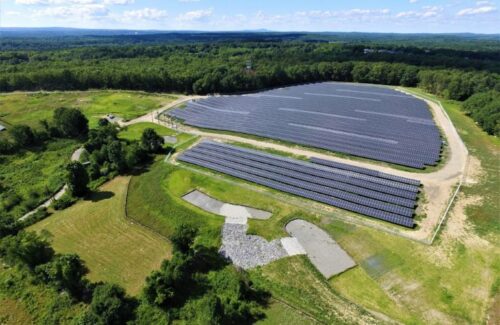
On May 13th, Massachusetts Governor Maura Healey proposed the Energy Affordability, Independence, and Innovation Act, aimed at reducing costs for residents and businesses. This bill addresses the issues in the solar energy industry from several aspects. Firstly, it will allow the Massachusetts Department of Energy and Resources (DOER) to sign new clean energy procurement contracts instead of requiring them to facilitate contracts through utility companies. The bill will also require Massachusetts utility companies to update their interconnection processes to reduce the time and cost for customers to connect solar projects to the grid. On the negative side, the bill also proposes to reduce net metering compensation for non residential solar projects (including community solar). The Community Solar Access Alliance (CCSA) expressed dissatisfaction with this provision of the bill and demanded that the governor change his approach. CCSA Northeast Regional Director Kate Daniel said in a press statement, "Some of the first community solar projects in the state, as well as many projects serving municipalities and local governments, have adopted net metering pricing. We are concerned that the proposals in the governor's bill may hinder progress on these projects, as well as other solar projects such as the Massachusetts Solar Renewable Energy Target (SMART) program. By changing the compensation rate for solar projects, Governor Healy has taken a step back in providing clean and affordable energy for Massachusetts residents
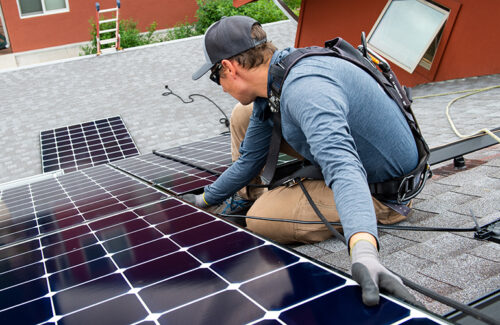
HOMIE is a home solar and thermal insulation company that is currently partnering with Climate First Bank to expand financing channels for low - and middle-income homeowners seeking energy upgrades. HOMIE founder Travis Montaque said, "Collaborating with Climate First Bank is an important step towards achieving our mission. We are committed to eliminating barriers that prevent families from moving into safe, affordable, and durable homes. Joining hands with Climate First Bank, we are partnering with an institution that upholds our vision of fairness, sustainable development, and healthier communities. Working hand in hand, we will ensure that more people have clear and convenient access to healthier and more energy-efficient homes. ” Through collaboration with Climate First Bank, HOMIE financing services will be available to homeowners in 49 states. In the past two years, Climate First Bank has issued over $300 million in solar loans. HOMIE's services cover from initial home health assessment to final installation. HOMIE will integrate with OneEthos, the fintech platform of Climate First Bank, allowing homeowners to access financing options, incentives, and solar tax credits through the platform. Currently, 17% of Climate First Bank's solar loans support low - and middle-income homeowners, and the launch of HOMIE will further expand its influence, the two companies said in a press release. I am pleased to announce the establishment of a new partnership between Climate First Bank and HOMIE. This cooperation represents an important step forward for the bank in its commitment to providing affordable clean energy. Chris Castro, Chief Sustainability Officer of Climate First Bank, said, "We are committed to providing solar financing solutions across the United States. By combining the bank's expertise with HOMIE's unique approach, we aim to create impactful initiatives that benefit communities and drive positive change. We will work together to build a brighter and more sustainable future. ” HOMIE was launched in Florida earlier this year, offering solar and thermal insulation services, and plans to expand its service coverage nationwide.
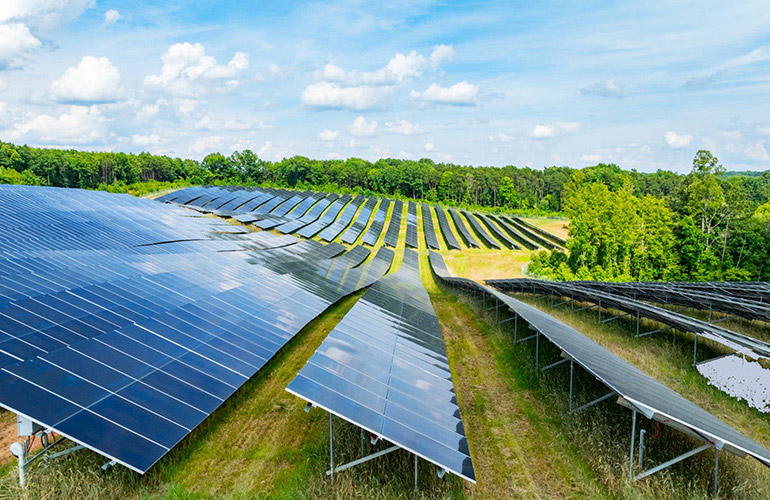
In the first quarter of 2025, solar and wind energy accounted for nearly 98% of the newly added electricity to the US power grid, and were the only source of new electricity added in March. The "Sunshine Day" campaign reviewed data from the Federal Energy Regulatory Commission (FERC) and found that March 2025 is the 19th consecutive month in which solar energy has become the largest source of new electricity generation. The Federal Energy Regulatory Commission (FERC) stated in its latest monthly "Energy Infrastructure Update" report that a total of 31 solar power plants were put into operation in March, with a total installed capacity of 446 megawatts, and another wind power plant - the 223.9 megawatt Shamrock Wind and Energy Storage Project located in Crockett County, Texas - was put into operation. These projects together account for 100% of the newly added power generation capacity for the month. In the first three months of this year, the total capacity of solar and wind energy (7076 megawatts) accounted for 97.8% of the newly added capacity, while natural gas (147 megawatts) only accounted for 2.0%, and the remaining 0.2% came from oil (11 megawatts). Solar energy accounted for two-thirds (66.6%) of the newly installed electricity capacity in March. In the first quarter, solar energy accounted for 72.3% of the newly installed capacity. From September 2023 to March 2025, solar energy has been the largest source of monthly new installed power generation capacity for 19 consecutive months. New wind power accounted for the remaining one-third (33.4%) of the newly installed capacity in March, and more than a quarter (25.5%) of the newly installed capacity in this quarter. At present, the installed capacity of solar energy (10.7%) and wind energy (11.8%) has exceeded one tenth of the total installed capacity in the country. The two together account for nearly a quarter (22.5%) of the total installed capacity of public utility scale power generation in China. In addition, about 30% of the solar power generation capacity in the United States exists in the form of small (rooftop) systems, which is not reflected in the data from the Federal Energy Regulatory Commission. If these newly added solar power generation capacities are taken into account, solar and wind power will account for over a quarter of the total electricity generation in the United States. Combined with hydropower (7.7%), biomass energy (1.1%), and geothermal energy (0.3%), renewable energy currently accounts for 31.5% of the total utility scale power generation capacity in the United States. If small-scale solar power generation is included, renewable energy currently accounts for about one-third of the total electricity generation capacity in the United States. By comparison, a year ago, renewable energy accounted for 29.4% of the total installed capacity of public utilities, including solar energy (8.3%) and wind energy (11.8%). Five years ago, this proportion was 22.7%, with solar...
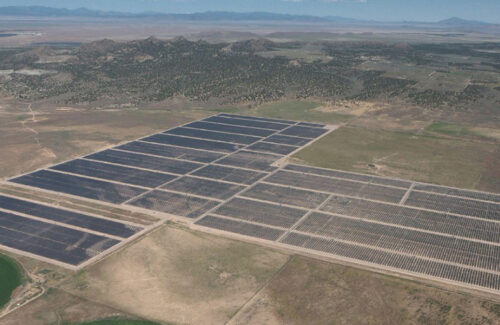
Castillo Engineering has invested in software aimed at addressing the shortage of qualified engineers in the solar industry and maintaining accurate communication with customers. Castillo Engineering is a utility scale solar engineering company headquartered in Maitland, Florida. The company has invested $2.5 million in two independent proprietary software platforms, PMO 360 and Design IQ, and has expanded its senior workforce to guide companies currently equipped with these programs. PMO (Project Management Office) 360 aims to enhance transparency between projects and clients by providing real-time disclosure of engineering plans, schedules, personnel, and array components on a dashboard available to project managers. The company hopes that granting access to the latest project engineering can reduce errors caused by poor communication. We want to ensure that the products we create are unique in the market, unlike the generic tools used by the entire industry - that is, the entire construction industry, "said Rick Castillo, founder and COO of Castillo Engineering. For many years, I have been working with clients, so I have decided to create a very transparent product. All expected information related to the project will be presented to the client Design IQ is a photovoltaic project design software that uses data from Castillo Engineering's array asset portfolio to draw project schematics. The program runs automatically and has a single interface that can generate relevant calculations and AutoCAD design drawings. Through Design IQ, data from previous projects can be applied to new projects with similar design challenges. Christopher Castillo, CEO of Castillo Engineering, stated that the technology aims to reduce the demand for solar project engineering, and the industry is currently facing a shortage of qualified engineers. Gary Joseph, Vice President of Sales and Marketing at Castillo Engineering, said, "We have extensive experience dealing with customers and understand the challenges they encounter in many (or even all) projects. We have summarized all the lessons learned over a period of time and decided to make them our focus for future development Castillo Engineer will specifically use PMO 360 and Design IQ in its utility scale solar services.
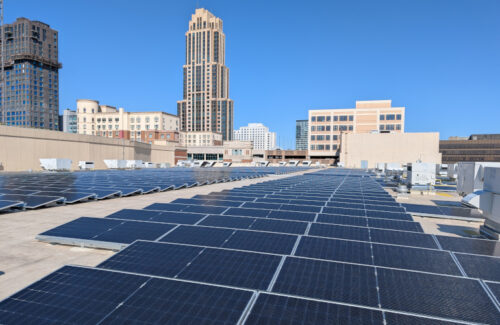
SolarKal has partnered with EPR Properties to develop a 1.4 megawatt community solar project on the top floor of the 230000 square foot New Roc City building in EPR, New Rochelle, New York. As the main user, EPR Properties will provide renewable energy power to the public areas of the building, while offering community solar subscription discounts to nearby residents and businesses. The New Roc City complex has various entertainment venues and is an important gathering place in the local area. Cassie Lane, Director of Asset Management at EPR Properties, said: 'We are pleased to see the completion of our solar project in collaboration with SolarKal and G&S, which will bring sustainable energy solutions and have a significant impact on the local community.'. ” SolarKal conducted a feasibility analysis of EPR's investment portfolio and determined that New Roc City is an ideal location for community solar projects. Subsequently, the team facilitated a competitive Request for Proposal (RFP) and ultimately selected G&S Solar, a developer with deep expertise in the New York market. SolarKal's Chief Commercial Officer Neil Sharma said, "SolarKal is honored to help EPR Properties unlock the economic value of its roofs while advancing its sustainable development goals. This project has reduced operating costs, created long-term rental income, and brought real energy savings to the community. As an ice hockey enthusiast who grew up in New Rock, I am immensely gratified to see this building become a model of positive influence. ” Abe Naparstek, Chief Operating Officer of G&S Solar, said, "This project demonstrates how solar energy can bring benefits beyond rooftops. We are honored to collaborate with SolarKal and EPR Properties to bring clean and affordable energy to New Rochelle, while helping the state achieve ambitious climate goals. ” The final construction of the project is underway, and SolarKal will provide ongoing project management to ensure the smooth implementation of the project. About 150 community solar energy users will benefit from the water and electricity cost savings brought by the project.
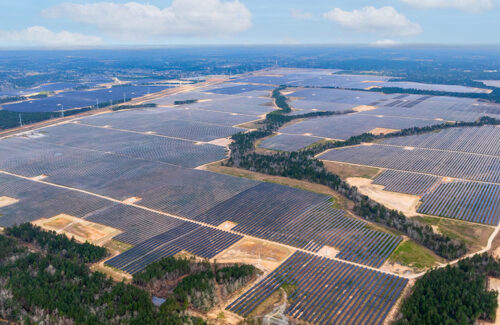
Ideematec, a solar tracker manufacturer, has expanded its strategic partnership with Parliament Energy Holdings (PEH), which is responsible for the 640 MW DC Parliament Solar project located in Waller County, Texas. Parliament Solar was not affected by Hurricane Beryl and 10 on-site hailstones during the construction period and is currently in operation. Ideematec will supply its Horizon L: TEC 1P tracker for PEH's upcoming 2.1 GW project in Texas. The first project of this project is a 650 MW DC power plant located in the southern part of Dallas, scheduled to commence construction by the end of 2025. Ideematec CEO Philipp Klemm said, "Our strong track record in hurricane prone areas, coupled with our hail design process, gives PEH confidence that the L: TEC 1P design can withstand strong wind and hail events - even if they occur simultaneously. ” Parliament Solar is a 640 MW DC power plant located in northern Houston, Texas, covering over 3000 acres and equipped with over 6000 Ideematec L: TEC 1P trackers.
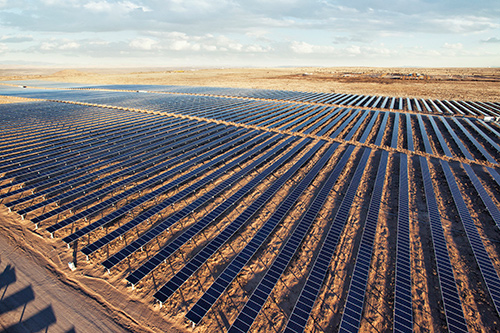
Array Technologies, a global supplier of solar tracking technology products, has expanded its SmarTrack software by adding backtracking and diffuse reflection optimization features to its Array STI H250 dual row tracker. This improvement applies the algorithm training and optimization tools that have been tested on the DuraTrack platform to the H250 system in the global market. Neil Manning, President and Chief Operating Officer of Array, said: "Our H250 tracker has long been a trusted solution in markets with extremely challenging site conditions, and the addition of SmarTrack Backtracking and Diffie has taken its performance to the next level. By applying algorithm training and real-time sensor data, we assist our clients in optimizing solar energy output in more regions and terrain types, ultimately improving project returns. ” The H250 tracker is designed specifically to tackle irregular terrain challenges. SmarTrack backtracking and diffuse reflection technology aim to improve energy output in complex environments and variable weather conditions. These tools can help trackers automatically adjust, minimizing shadows and capturing light to the maximum extent even on cloudy days. The array based SmarTrack backtracking technology utilizes algorithm training, terrain analysis, and production data to reduce shading and increase morning and evening power generation. The system adjusts based on the slope characteristics of each motor group to continuously increase power generation. By analyzing real-time global horizontal irradiance sensor data, the system can flatten the tracker angle, thereby capturing more diffuse light and increasing power generation in situations where direct sunlight is limited. These features have been tested in Spain and Brazil and can be immediately deployed to new and existing H250 projects. Combining Array's hardware and integrated software platform, SmarTrack is currently optimizing over 5 gigawatts of solar power generation capacity globally.
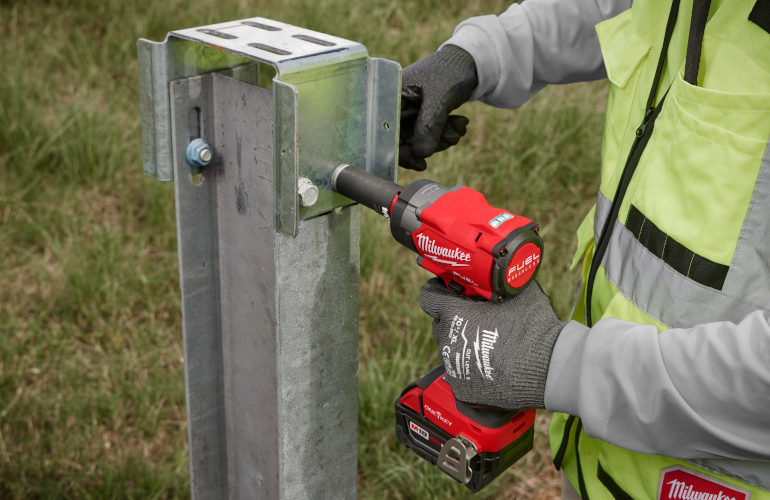
During the installation of brackets and panels in large-scale solar projects, thousands of bolts must be tightened with appropriate torque to ensure a secure connection of the array. Tightening bolts too tightly can damage the long-term structural integrity of the system. Loosening the bolts can cause the components to loosen. Therefore, appropriate torque during installation is an important factor in ensuring successful operation and maintenance. Mark Kelly, Product Marketing Manager at Milwaukee Tools, said he has seen audit results for solar projects showing a wide range of torque values, with up to 80% of bolts in incorrect positions at some sites despite passing quality inspections. Incorrect torque is a common issue in solar projects, "Kelly said. The traditional two-step method involves first tightening the bolts with an impact wrench, and then manually tightening them with a click torque wrench, which heavily relies on the operator's skills. This can result in poor torque repeatability and severe overtightening There are various tools and techniques to ensure torque consistency. The torque rod will absorb additional impact force when it reaches the preset torque level. Some installers avoid using battery powered tools to prevent insufficient torque due to low battery voltage. More technicians rely on markings to record the degree of bolt tightening, in order to see if it has changed over time. However, not all of these suggestions are 100% reliable. Milwaukee's goal is to improve this field for solar installers. The company's M18 FUEL impact wrench is equipped with a TORQUE-SENSE sensor, which helps to obtain repeatable torque values. Kelly said, "This tool provides repeatable torque results, ensuring consistent and reliable fastening, which is crucial for the quality and safety of solar installations It does not require additional additions to existing impact wrenches like torque rods, as all core components are integrated inside the impact wrench. No need for two-step operation, only one tool is needed to provide the required torque value. Milwaukee also offers "one click" technology, which can record each trigger pull and capture data such as target torque levels and error reports. The recorded data helps to detect potential issues early, enabling proactive maintenance and reducing downtime. Kelly stated that access to ONE-KEY data can be customized according to project requirements, but typically individual installers, EPCs, and asset managers can see torque figures. EPC can access data to help ensure that torque control settings are fully utilized and manage tool usage across multiple projects. Project managers can track tool performance, utilization, and maintenance plans to optimize project efficiency, "he said. The quality assurance team can use this data to verify whether the installation meets the required standards and generate reports for auditing. Each tool owner can customize settings, track tool locations, and monitor usage...
Categories
New Products
Tin Roof Rapid Solar Mounting System with Hanger Bolt Read More
Residential Small Solar Easy Bracket Kit for Home Balcony Read More
Automatic Single Pile Solar Tracker with 10 PV Panels Read More
Angle Adjustable Aluminum Easy Solar Panel Bracket for Garden Read More
Intelligent Single Post Dual Row Solar Tracking System Read More
5000ES Solar Off-Grid Energy Storage Inverter Supplier Read More
Multi Drive Double-Sided Single Axis Tracker System Read More
© Copyright: 2026 Xiamen Wintop New Energy Tech Co., Ltd.. All Rights Reserved.

IPv6 network supported
Friendly Links:
Integrated Solar System